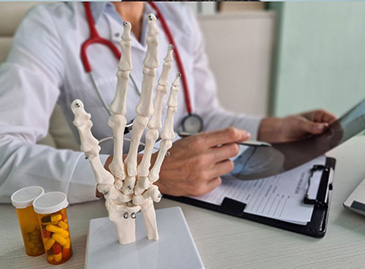
Understanding Tennis Elbow: Causes, Symptoms, and Treatment
Tennis elbow is a condition that causes pain in the outer part of someone's elbow. It is otherwise called lateral epicondylitis. This condition is simply the inflammation of the lateral epicondyle, the tendons, and the muscles that attach to it.
Let us quickly have a glimpse at what lateral epicondyle comprises. It is the lateral part of the most inferior part of the humerus (sometimes called the "Funny Bone"). Furthermore, the extensor carpi radialis brevis (ECRB) is attached to this bone, and this muscle is severely affected in the tennis elbow.
In addition, tennis elbow pain is the most common cause of elbow pain. It can be traced to overuse of some muscles and overloading of the elbow joint. As the name implies, tennis elbow is common to tennis players. But people who do a lot of heavy lifting might also be at risk of this condition.
What causes tennis elbow?
Generally, Tennis elbow occurs when you overuse the forearm muscles. Health practitioners believe that inflammation of the tendon of the ECRB is the primary cause of this condition. However, these tendons become inflamed and cause pain because of overuse and overloading of the elbow and forearm.
Furthermore, this condition can also come into existence due to trauma to the elbow through a fall or banging the elbow. Also, repetitive forceful motions that strain and pull the tendon contribute significantly to tennis elbow. However, improper gripping of tennis racquets also contributes considerably to tennis elbow. However, other sports, such as plumbing, carpentry, lumber wood cutting, etc., are all risk factors for developing lateral epicondylitis.
You should also note that tennis elbow usually affects men between 30 and 50 years old, and performing specific activities can put you at a high risk of developing tennis elbow. These activities include but are not limited to;
- Playing racquet sports (tennis, badminton, etc.) or sports that require throwing (Javelin)
- Activities that require repetitive hand movements, e.g. typing or sewing
- Repetitively bending the elbow to play musical instruments like the violin.
- We are cutting down trees with a chainsaw.
- Plumbing etc.
How do the tendons and muscles get inflamed?
According to medical science, the ECRB, attached to the lateral epicondyle, suffers the most. In addition, according to scientific experiments, muscle tendons do not undergo traditional inflammation. But when you overuse these muscles, it causes a strain on the tendon, and they begin to tear. These tendons start to rupture and break down. Hence, there will be a noticeable degenerative change around these tendons.
What are the signs and symptoms of tennis elbow?
Here are yardsticks to know if what you're experiencing is tennis elbow
- Pain on the elbow's outer part. The pain can range from mild to severe pain when using the elbow.
- Pain in the forearm and back of the hand.
- Pain from excessive movements of the hand. Activities like gripping and twisting the hands can worsen the pain.
Generally, this pain sometimes usually lasts for six months to 2 years. But, most people (about 90%) recover in 1 year. However, all these symptoms do not negate a visit to the hospital, where your doctor will diagnose adequately.
How is tennis elbow treated?
Tennis elbow treatment is multifactorial. This implies that there are a lot of factors that contribute to the treatment of tennis elbow. The factors are;
Tennis elbow is self-limiting:
This means that the elbow gets better independently without any medical intervention. The most important thing is to avoid performing the activities that caused the tennis elbow initially.Painkillers such as Nonsteroidal Antiinflammatory Drugs (NSAIDs) help play a significant role in the treatment of tennis elbow. They can be applied like a cream or gel to the point of inflammation, and many are out there. Visit a medical practitioner to prescribe the right one for you.
Physiotherapy / Physical therapy:
Your doctor might recommend the services of a physiotherapist. Physiotherapists help restore movement to your injured muscles or joints and may suggest tennis elbow exercises to help with the elbow's condition.
Surgery:
Your surgeon may suggest you remove the affected tendon surgically if you persistently experience unbearable pain after trying other treatment methods.
Other means of treatment may include Steroid injections and orthotic devices.
Conclusion
Finally, the Tennis elbow is a joint elbow pain that occurs due to overuse of the forearm muscles and causes strain and rupture of the tendons. This condition is common in athletes and familiar with people whose means of surviving involve frequent motion.
Meniscus Repair Surgery Price Turkey



